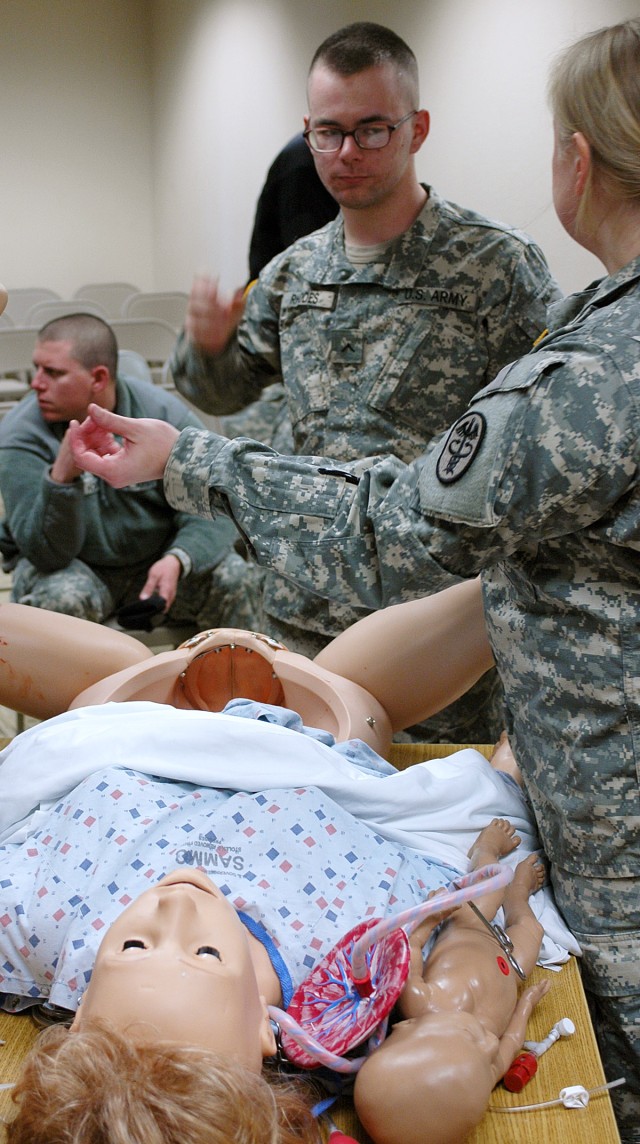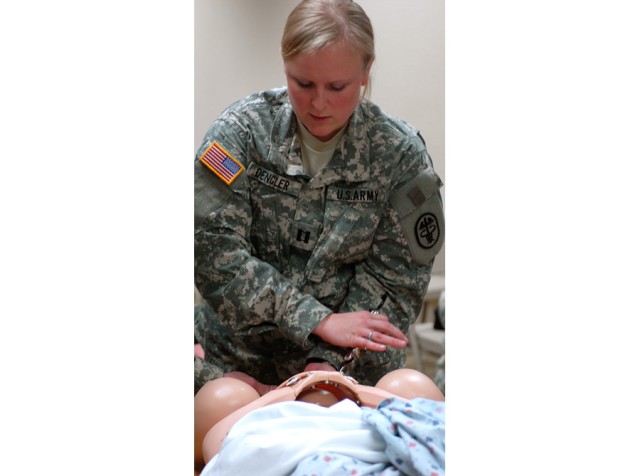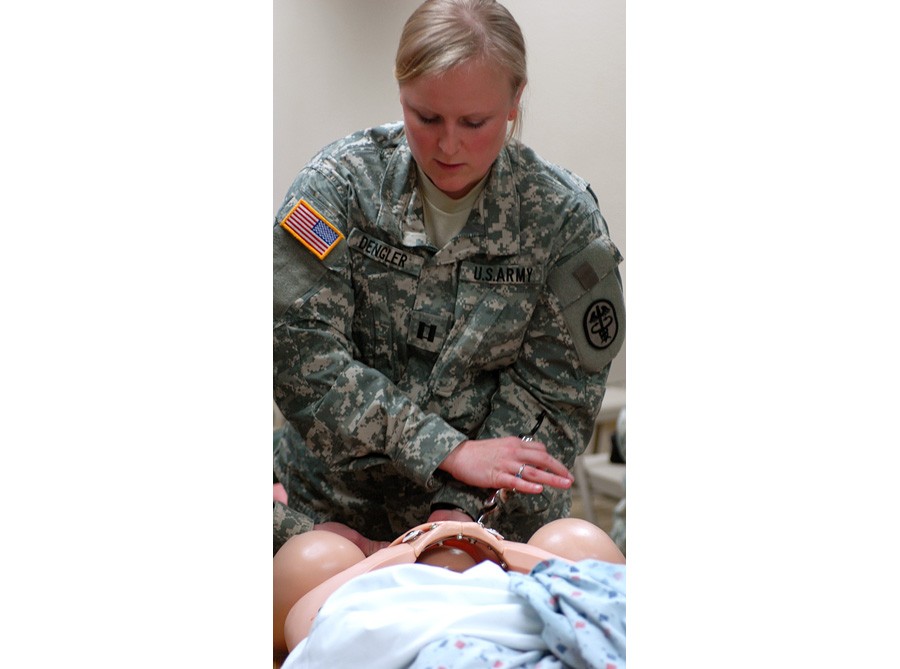FORT HOOD, Texas -- Giving birth is a natural occurrence. Some Soldiers and family members have the luxury of having a child delivered in the comforts of a home or hospital. However, other unlucky individuals can only hope to give birth in a structure with a roof and four walls.
During their latest training, medics with the 41st Fires Brigade medics learned how to deliver babies in an emergency situation or in a deployed environment.
"No pregnancy is alike," said Staff Sgt. Noel Hunter, medical noncommissioned officer for the 41st Fires Brigade. "You never know when you're treating local nationals in another country and someone goes into to labor. In the long run, as medical professionals, we have to be ready for the unexpected."
However delivering babies isn't a new topic for most Army medics, as medics receive instructions on birthing techniques in advance individual training, known as AIT.
"This was good training," said Spc. Diane Gottlieb, medical specialist for the 41st Fires Bde. "We covered delivering babies briefly in AIT. It's good to remain current on birthing techniques. You never know when your patient is ready to give birth."
The aid station's officer in charge, Capt. Bradley Dengler arranged for his wife, Capt. Katherine Dengler, a resident in the OB/GYN department at Brooke Army Medical Facility in San Antonio, to come up and teach the class.
"It's important to continue to train and learn about pregnancies," said Katherine. "It's not only important to have the knowledge and experience on how to deliver a baby, but you also have to be aware of emergencies or any unexpected situations to arise. A well trained medic can react quickly and calmly, and that is my goal; to strengthen the knowledge and experience in the 41st Fires medics."
Katherine also brought an advanced birthing training aid, the Noel Doll, a motorized training aid used to simulate real life births. The doll also has the capability of attaching tubes and pumps to simulate blood and other bodily fluids during the delivery process. Dengler was unable to bring the motor along but, she was still able to simulate the baby going through the birth canal by pushing on one end of the baby-sized mannequin.
The birthing class helped the medics throughout the brigade to become more confident and proficient on important perishable skills.
"This class was very informative, and almost realistic," said Pvt. Grady Rhodes, medical specialist for the 41st Fires Bde. "The (simulator) made for a better learning environment and easier to follow instead of doing this training all by slides and videos."
Whether deployed or stateside, 41st Fires Bde. medics are trained to deal with the unpredictable and they are capable of delivering little bundles of joy.
Related Links:
Army medical simulation scientists developing tools to give realistic training
STAND-TO!: 235 Years of Army Medicine: Bringing Value... Inspiring Trust




Social Sharing